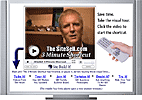|
Welding-cobaltsafely for demanding applications.SOLUTIONS with Effective, Practical Advice
Welding-cobalt and cobalt alloys requires some metallurgical understanding. These metals are usually employed for their stability at elevated temperature. Also for their corrosion and wear resistance. Another common application of cobalt alloys is hardfacing valve seats of internal combustion engines. These metals are used also in Dental applications and in Prosthetic Bone Implants. A previous page dedicated to Heat Resisting Alloys Welding includes also a discussion of some Cobalt alloys. They are selected for their suitable properties for certain applications.
The microstructure of cobalt alloys at room temperature It is similar to that of austenitic stainless steels. Cobalt and cobalt alloys in annealed wrought form are quite ductile and readily formed to the required shapes. Their Welding-cobalt characteristics are similar to those of wrought nickel alloys. Development and qualification of Welding Procedure Specifications is required as the best way to assure quality production. Heat input for Welding-cobalt should be kept in the low to moderate level for better results. Copper contamination must be avoided because it will readily cause cracking while Welding-cobalt. Liquid Metal Embrittlement (LME) is initiated by molten copper in the heat affected zone. Care must be taken therefore to prevent any contact with copper from whatever sources. Stainless steel wire brushes are recommended for interpass cleaning, if needed. Cast cobalt alloys may need to be welded for fabrication or repair. Welding-cobalt is done with arc welding, plasma arc welding, resistance spot welding and with high energy processes. Oxyacetylene welding is not recommended. Submerged arc welding (SAW), if used with high heat input, could cause solidification cracking of the weld metal. Electron Beam Weldability is reported good for HS-21 (AMS 5385) in unrestrained joints, but poor in restrained joints. For Cast alloy H-31 (X-40) it is reported good to fair. For Alloy S-816 (AMS 5765) it is reported fair. Good Welding-cobalt practices require adequate joint preparation and thorough cleaning before welding to assure sound joints. All thermal or mechanical cutting methods are acceptable for preparation. All the surfaces should then be ground or polished before Welding-cobalt, to clean and bright metal condition. A 25 mm (1 inch) band from both sides and faces of the joint must be included. Cleanliness is very important. Contamination by greases, oils, cutting oils, crayon marks, corrosion products, lead, sulfur, and other low melting point elements, paint, scale, dye penetrant solutions, and other foreign matter should be completely removed. Otherwise they can cause severe cracking problems. Before Welding-cobalt, the joint surfaces and their surroundings must be thoroughly degreased again, with proper clean solvents. Shop compressed air, if used, should be free from any traces of oil. Preheating of cobalt base corrosion and heat-resistant alloys is not required. Metal frozen in cold weather should be allowed to reach room temperature in the heated shop before welding, to avoid condensing moisture on the surfaces. Interpass temperature should be below 93 °C (200 °F). To control the interpass temperature, auxiliary cooling methods like water quenching may be used. Stainless steel wire brushing with clean brushes is normally adequate for interpass cleaning of GTA and GMA weldments. The grinding of start and stop craters is recommended for all fusion welding processes. The following cobalt base alloys are strengthened by the presence of tungsten and molybdenum in solid solution: Haynes 25 (L-605)(AMS 5737, AMS 5759), Haynes 188 (AMS 5608, AMS 5772), S-816 (AMS 5765), Stellite 6B (AMS 5894) and UMCo-50. The composition includes chromium for corrosion resistance, precise content of carbon and of other elements that provide carbide formation. Among the Precipitation Hardenable alloys, these are found: AR-213, MP-35N (AMS 5758, AMS 5844, AMS 5845, AMS 7468), MP-159 (AMS 5841F). Welding results in solutioning of age-hardening constituents with consequent reduction of mechanical properties. Those can partly be restored by suitable post weld heat treatment. Fusion Welding-cobalt is performed usually with matching composition of filler metal to that of base metal. Where dissimilar metal welds are involved, selection of the welding filler metal depends upon the specific circumstances. The base metals and filler metal should be metallurgically compatible. The purpose is to avoid crack susceptible microstructure or dangerous phases which might promote hot cracking, embrittlement, or other metallurgical problems. Furthermore the as-welded joint should have mechanical strength and toughness at all the temperatures sustained during the intended service. If low ductility interferes with further forming of wrought cobalt alloy weldments, a solution anneal at 1121 °C (2050 °F) with water quenching is recommended. Click on Bulletin 82 for a rich list of Online Resources on Cobalt Welding. The following Video from a Commercial Company (no endorsement intended) illustrates the Investment Casting process, used also for Cobalt base alloys.
Any questions or comments or feedback? Write them down and send them to us by e-mail. Click on the Contact Us button in the NavBar at top left of every page.
To reach a Guide to the collection of the most important Articles from Past Issues of Practical Welding Letter, click on Welding Topics.
Back Home
Mid February 2013 - Resources on Cobalt Welding
If you did not yet find what you need, why not typing your question in the following Search Box?
Watch the following Video...

POWERED BY: Click on this Logo NOW! Watch - The Video: and also
Copyright (©) 2009, 2010, 2011, 2012, 2013, 2014, 2015, 2016, 2017 
|



